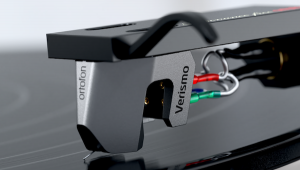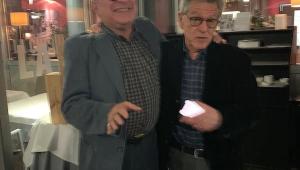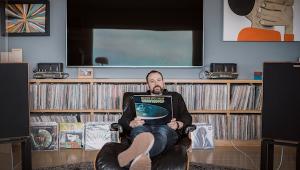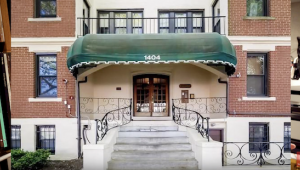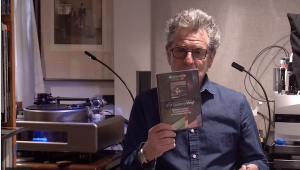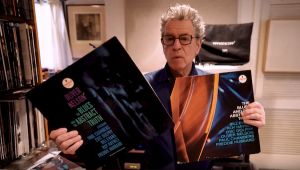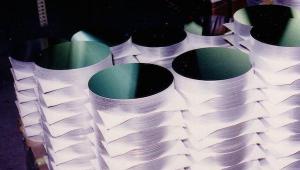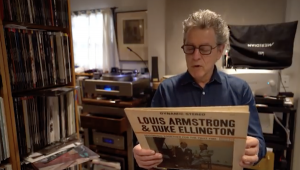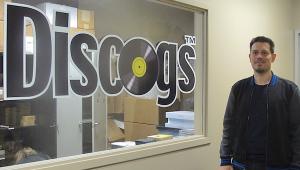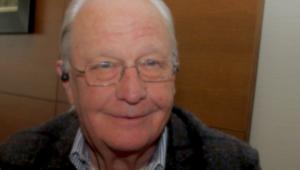Nick Mason Uncages Memories of Making Animals, Declares Which Pink Floyd Albums Sound Better in Mono on Vinyl, and Explains Why the Band Came Up With a New Song in 2022
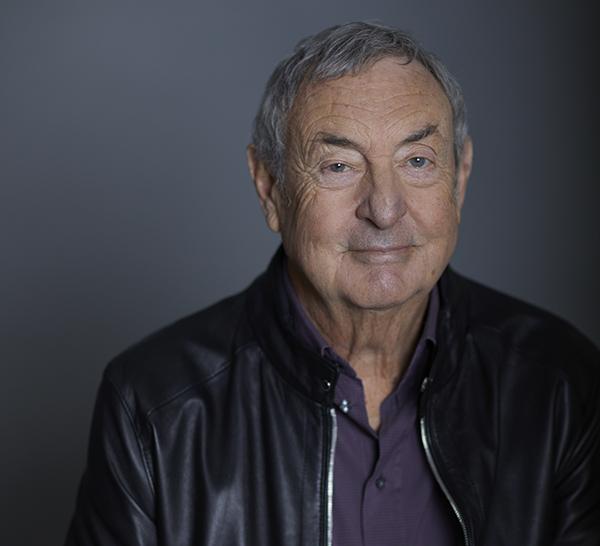
Let’s face it — January 1977’s Animals has always been considered to be somewhat of a dark horse in the Pink Floyd recorded canon. Yet here in Year 45 of Animals, the album is finally getting a rightly deserved re-evaluation, thanks to Animals 2018 Remix (Pink Floyd Records/Sony Music), which was just released on LP, CD, and BD on September 16. (You can read all about the release-specific specs and nitty-gritties in our prior News report here.
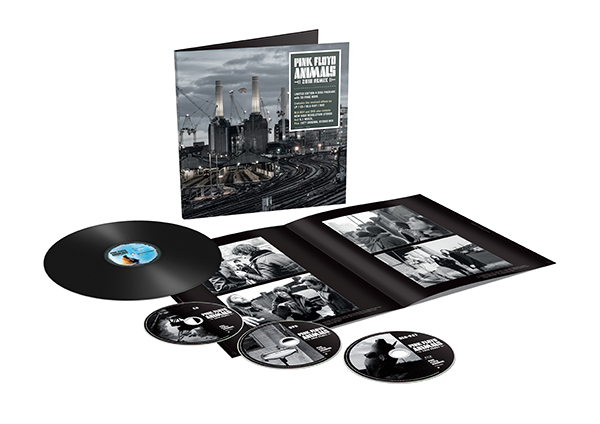
Founding drummer Nick Mason agrees the time is now to re-absorb Animals. “I think it’s almost like the early Syd Barrett stuff,” he observes, referencing Floyd’s visionary founding guitarist/vocalist who exited the group in 1968. “A lot of people are unfamiliar with Animals. Everyone knows [March 1973’s] Dark Side [of the Moon] and [November 1979’s] The Wall, and then perhaps [September 1975’s] Wish You Were Here. In a way, Animals is one of our ‘undiscovered’ albums. So, hopefully, this release might really interest people to hear what we did when.”
To be sure, this Animals update has certainly been a long time coming. Having interviewed Mason numerous times over the years, I did at least get the sense the album was on an inevitable re-release trajectory. In June 2011, Mason first confirmed with me that “Roger [Waters, founding bassist/vocalist] has had in mind that he’d like to do a proper remix of Animals. And that’s interesting, because that was the least technically recorded album we’ve done. I have nothing against where we recorded it, but it might benefit from being relooked at because it’s got some really nice aspects to it.”
Fair enough. Then, in November 2016, Mason told me, “I haven’t talked about Animals with David [Gilmour, Pink Floyd guitarist/vocalist] or Roger [Waters] in a long time, but maybe one or even both of them felt if ever there was an album that could benefit from a remix, it was that one, rather than just a remastering. Maybe we could revisit that.”
Then, in August 2020, after many of us pretty much knew a revisited and remixed Animals was most definitely on the way, Mason clarified with me, “It’s certainly taken 10 years, yes, but I don’t know where we’ve really gotten to with that one. There’s been a disagreement between Roger and David on some aspect of it — and, to be honest, I’m just waiting to see when the dust settles.”
But now, right here on the cusp of the fall season of 2022, the dust has indeed settled, and you can finally obtain your own copy of Animals 2018 Remix to spin on 180g wax. To learn more about the process of getting Animals from there to here, Mason, 78, and I got on a Zoom call across the Pond to discuss what elements of the original album stand out more on the remix, which Pink Floyd albums sound better in mono on vinyl, and why the band was compelled to make new music in 2022. You got to be crazy / Gotta have a real need. . .
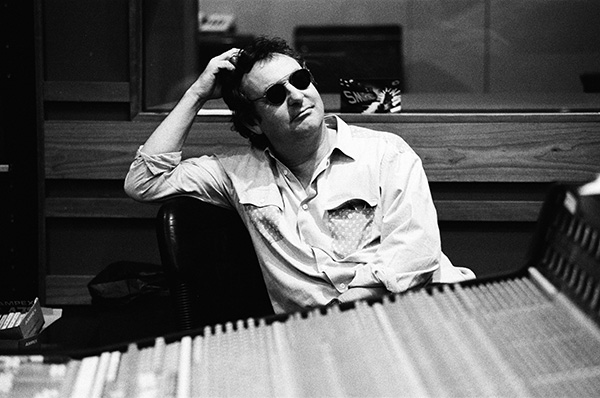
Mike Mettler: Did you go back and QC the 2018 Remix with the original Animals record and find differences or things you heard that you wanted to have brought out more when [producer/remixer-in-chief] James Guthrie was working on it?
Nick Mason: To be honest, I really waited for James to simply slog through what he’d done. James rarely disappoints. But of all our albums, Animals is the one that most deserved having a real rethink of it and really have a relisten, because there is a lot there you’re really unaware of in the original.
Mettler: For me, one example of that is the cymbal work you do that comes in at the very end of “Dogs” [Track 2 on Side 1]. It’s a subtle thing, but it stands out more on the 2018 Remix LP.
Mason: Yes. I’d say the drums on “Dogs” are certainly more noticeable — perhaps more than anything else. Which is really nice, because so often, you do find things have just gotten lost in the mix. Even with things done far more recently, it’s amazing how you listen to it in the studio and you get one sound off it, and then you have that final mix that’s another.
Mettler: And that’s the difference, right? There’s the tape you sign off on, the original master, and then what you get back is often not even the same. And when you hear that, you’re like, “This is not what I signed off on. What is missing? What is different?”
Mason: Yeah. No, it’s extraordinary, actually, how sometimes things either disappear, or reappear, or whatever.
Mettler: One of the things you mentioned to me about Animals before is how the recording process was different for you because you were now at Britannia Row, the studio Pink Floyd created, which was a very different recording experience than at EMI/Abbey Road, where many previous Pink Floyd albums had been done. Can you tell me about that difference to you, as a recording artist, moving from Abbey Road to a place you guys essentially built from scratch?
Mason: Yeah, well, it was very different. But I think it was good — although the result, sonically, was inevitably not quite as good, quite simply. (chuckles) But it was this thing of, we’d sort of done it all at Abbey Road — and that was great — but we wanted to build our own studio with this idea we’d build one that was very simple to operate. The idea being, particularly if we wanted to do something individually, we wouldn’t actually need a lot of staff, and maybe even we could engineer it ourselves. It was a much more intimate, relaxed operation — very different to what we’d done in the past.
And I have to say, I think it was very enjoyable. It was sort of “home,” in a way. We’d chosen this building [a three-story building, located at 35 Britannia Row in Islington, London N1], and built a studio there on a basis that Roger was within walking distance [from his home at the time]. I was a little bit more further away (slight pause) — no, I wouldn’t have walked it. (chuckles) Definitely, it was chosen because it was in the right place.
Mettler: And the console you guys had in that studio was an MCI JH500, is that right?
Mason: That’s right — and the [MCI] tape machine as well. It was a perfectly good, workable piece of kit, but not quite as good as the studio stuff at Abbey Road — and, inevitably, not as well-maintained. I mean, it was looked after, but Abbey Road would go to enormous lengths to do the setup each day.
Mettler: Did you feel your pre-pro was more intense for the Animals sessions because you had to deal with all those different, and possibly difficult, factors?
Mason: I didn’t think we were aware of thinking of it as difficult factors. I think it worked more in the idea that we could do it ourselves.
Mettler: So it was essentially DIY — which means Animals is your punk album. (laughs)
Mason: Oh, yeah! (laughs) The punk thing is interesting because of the timing. Were we influenced by punk? I’m really not sure. I think, subliminally, we probably were. By then, we’d been around for, let’s see — that was ’77, and we’d already done 15, 17 years, and — no, hang on; we’d done10 years. The thing is, we’d moved from being the cutting edge to being grand old men — but fairly confident old men, I suppose. (chuckles) [MM notes: Actually, it was more like 12 years by that point, since Pink Floyd had formed in 1965.]
Mettler: Yes, but you did produce a Damned album in that Britannia Row location not too long after Animals, so there was a very direct punk connection in that studio. [MM adds: Mason produced The Damned’s November 1977 album, Music for Pleasure, which that band had recorded there that August.]
Mason: Yeah, but I think the thing I particularly liked about punk was the way things were done quickly, and that it was much more rough and ready. I think we tried to get on with it — with the recording [of Animals] — but I don’t think we actually rushed it. I certainly don’t think we would take the first take, and go with it. We were still well used to the idea that you do it again and again and again, until you get something useful out of it.
Mettler: In a way, Animals also has a jazzy feel to it. For example, your playing on “Dogs” almost feels like I should be watching you do it at the Village Vanguard. (Mason laughs) What are you feeling when you’re hearing your own playing on the 2018 Remix record?
Mason: The interesting thing is, I don’t think I felt it was jazzy, but probably that influence is entirely Mitch Mitchell [the drummer for The Jimi Hendrix Experience]. I’ve always reckoned Mitch has been one of my favorite drums because that slightly jazzy feel is the sort of thing that marks the idea of pulling back on the tempo. And he was really the perfect drummer for Jimi, wasn’t he?
Mettler: Oh yeah, absolutely. You have Jimi going off into the stratosphere at times, especially at Woodstock. When he and Mitch get into the more improvisational section of that set — which I’m going to call space jazz — I feel like you’re channeling that vibe during David Gilmour’s talk-box sequence on Side 2, Track 1, in “Pigs (Three Different Ones).” There is an attack other drummers would take there, but you’re letting the song play out. You’re not overwhelming it — and that always seems to be your role as a drummer. You’re the support mechanism.
Mason: Yeah, well, I’ll be pleased with that as a sort-of title for what I do. (smiles)
Mettler: On “Sheep” [Side 2, Track 2], there’s a credit for you as providing “tape effects.” Tell me about what that might actually have entailed, based on what we’re hearing there.
Mason: Well, I think particularly on the vocal [in the song’s back half], I was doing that, yes. There was a sort of flange there. It’s hard to remember everything about making the record, but I do remember a lot about being at Britannia Row and how we worked there and a bit about who was there, and so on. So much of it was overtaken by other things like getting the studio working, and then using it.
Mettler: Like you said, it was now your place, and suddenly, you have 500 other things you have to do as opposed to showing up at an Abbey Road where everything is handled by the lab coats, so to speak. At Britannia Row, you don’t have [famed EMI/Abbey Road engineers/producers] Bernard Speight or Norman Smith there, taking care of all that stuff. Would you say all that was overwhelming at that point, or just like, “We gotta get this handled”?
Mason: No — definitely not overwhelming. It definitely felt like, “Yeah, this is a nice thing to do.” I think — well, I know it felt a nice thing to do, because we actually started recording [November 1979’s] The Wall there. We only moved out of Britannia Row for tax reasons, and we were driven abroad to make The Wall. But before that, I think we settled into the idea that we would’ve done it [i.e., all of The Wall] at Brit Row, if we could.

Mettler: We also have to talk briefly about our friend Po — Aubrey Powell — and the revised artwork on Animals, which must make you feel good to see how that was done.
Mason: I thought that was beautiful. It’s one of those moments where you think, “Oh, I wonder what he’s gonna come up with, because it’s not quite the same without Storm.” And then, I looked at the image Po had done, and I thought, “That is truly brilliant. Really, really brilliant.”
[MM notes: Storm is, of course, Storm Thorgerson, Powell’s partner in the graphics arts collective known as Hipgnosis that designed scores of Pink Floyd covers, among those for many other major artists of the rock era. Thorgerson passed away in 2013.]
Mettler: Let’s talk about the first few records you got to make as a recording artist. In recent years, there have been mono reissues of Pink Floyd’s first two albums, [August 1967’s] The Piper at the Gates of Dawn and [June 1968’s] A Saucerful of Secrets, both of them released on 180-gram vinyl and remastered from the original mono analog by James Guthrie, Joel Plante, and Bernie Grundman. Do you feel mono is the better representation of these first two albums?
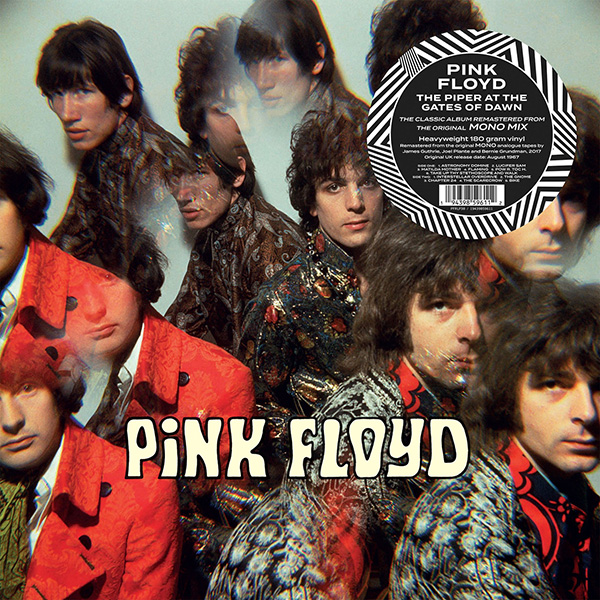
Mason: Yes, I think so, because trying to make stereo out of mono — it’s interesting, and perhaps inevitable, that people want that [stereo mix], but it is an artificial assembly.
Mettler: That’s a fair point. Is there something from Piper or Saucerful that, to you, sounds like “definitive mono”?
Mason: I don’t think so. I do have to say I’ve listened to Piper a lot, but I’ve been listening to it with the idea of drum parts for [what I’m doing with] the current band.
Mettler: Right, for Nick Mason’s Saucerful of Secrets [which is currently on tour in the U.S., as of this posting]. Well, in that sense, did you come across something you hadn’t heard for years and thought, “Oh, I wanna try to play that now, to get ready for the next tour”?
Mason: Well, generally, with things like that, what one remembers is completely different to what’s actually on the record! (chuckles) I think it was “Chapter 24” [Track 3 on Side 2 of Piper] where I was sure there was a certain drum part — and, of course, there isn’t. There isn’t one there, but I’d been searching for that missing link. [MM notes: You’ll indeed hear cymbals and chimes in the official audio embedded below for “Chapter 24,” but no drums.]
Mettler: So do you now just come up with a drum part for it, and make it into a “Chapter 25”?
Mason: (laughs) Well, I haven’t yet — but it wouldn’t be difficult to do so!
Mettler: I also feel like there’s a lineage between Animals and “Hey Hey Rise Up!” — the first new Pink Floyd song in many years [i.e., since 2014] that was released earlier this summer. Some of the thematic elements of it came to mind when I played them back-to-back. You could feel some of the commentary about the quote unquote “animals” in Animals and some of the “animal activity” going on today, which made it seem like there was a little bit of a thematic tie-in.
Mason: I have to say, I think “Hey Hey Rise Up!” is an amazing piece of work by David [Gilmour], because he took that a capella singing [by Andriy Khlyvnyuk, of the Ukrainian band BoomBox] and built a backing track we could play to from that vocal. How he did it, I’m still not quite clear (chuckles), but we ended up with a click track on something that had never originally been done with anything like that. It’s an extraordinary piece of work.
Mettler: Yeah, it’s really quite amazing. And I’m also glad that, in addition to the CD and digital versions, we also got a 45 for “Hey Hey Rise Up!” as well.
Mason: Yeah, and it was a shame we couldn’t really get that out like it would’ve been done in the old days — where, three days after recording it, the single would hit the shops. But it’s taken six months, or whatever, to do that.
Mettler: It does take a while to get vinyl pressed these days, even for Pink Floyd.
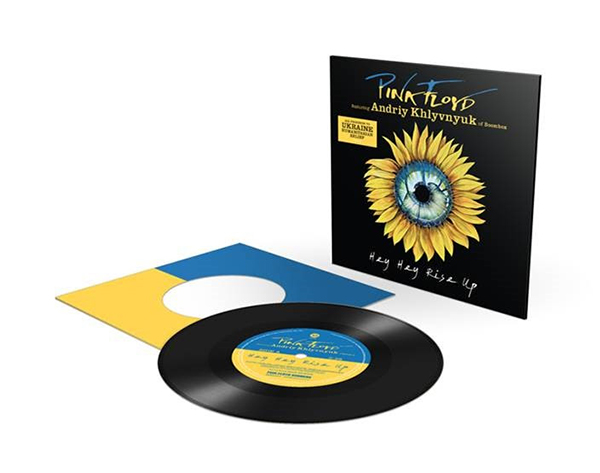
[MM notes: The song “Hey Hey Rise Up!” was recorded in February and March 2022, and the physical editions of it were released circa four months later, in July 2022. The B-side of the 45 is “A Great Day for Freedom 2022,” an update of a song originally from Floyd’s April 1994 album, The Division Bell.]
Mettler: And as I briefly mentioned, you’ve been playing a lot of early Pink Floyd material in Nick Mason’s Saucerful of Secrets, and you released a double live album of that material on vinyl [September 2020’s Live at the Roundhouse]. Do you feel it’s a good to have that music back on vinyl in its full-size form?
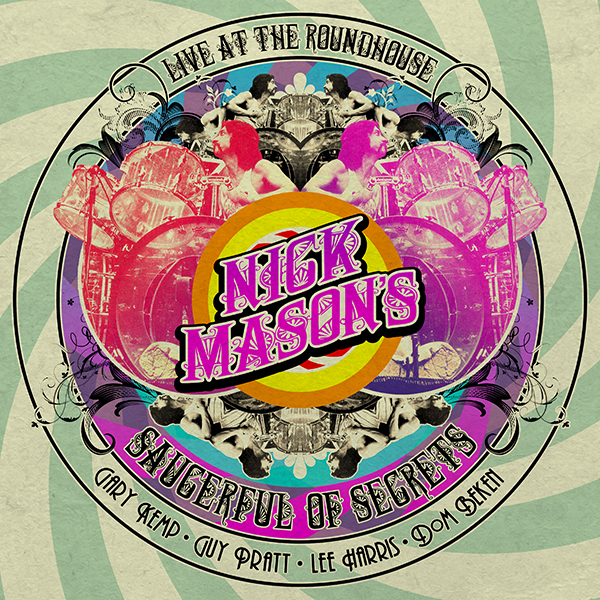
Mason: Yeah! And I think so on every level, because I recently got a really good turntable — just absolutely terrific. It’s an extraordinary thing, listening to things properly. [MM notes: I’ve asked Nick to confirm the model name of the ’table he got, and when he does so, I’ll update this passage accordingly.]
[Official MM update, on September 22: Good news — Miles Showell of Abbey Road Studios reached out to us directly to clarify all the info you/we could possibly need about Nick’s turntable! Here’s what Miles told us, verbatim: “Fortunately, I can help here as it was me that put Nick in touch with his turntable manufacturer. I was mastering the Saucerful of Secrets live album with Nick in attendance, and he mentioned to me that he was looking for a decent vinyl replay system, and what did I recommend? Luckily, I am friendly with Touraj Moghaddam from Vertere Acoustics, and I heartily recommended Vertere to Nick. Touraj visited Nick at his studio, and installed an MG-1 turntable fitted with an SG-1 tonearm. I think the cartridge fitted is an Audio-Technica VM760SLC. He also supplied a PHONO-1 preamplifier. All the cables were Vertere PULSE-1.”]
Mettler: Now that you have the new turntable set up, have you either revisited some records you used to love, or find anything new that you like?
Mason: Well, there have been a number of things I’ve listened to, but the thing is (chuckles), you get distracted. You start looking for one thing to put on, and end up listening to the entire Woodstock album [originally, a 3LP set released in May 1970]. (MM laughs) That was a fun, recent one. Especially Santana, with the drum solo from (slight pause) — Mike Shrieve it was, I believe.
Mettler: Yeah — Michael Shrieve, during “Soul Sacrifice.” It’s funny — I actually just rewatched all of Woodstock recently. It’s something I usually do every August, and watching what Michael does there — I mean, he wasn’t even 21 at the time.
Mason: He actually came to see a show of the Saucers [his current band’s nickname] three years ago, and it was really great to meet him.
Mettler: I’ve met him too — he’s a really wonderful guy. Now, if I remember this correctly, you once told me the first 45 you bought was “See You Later, Alligator” by Bill Haley and His Comets. Does that sound right?
Mason: Uhh, not quite — and I’ll tell you why. Well, it’s roughly right. It was the first record I bought, but it was a 78 [which came out as a 10-inch on Decca, in 1955]. And it was the only 78 I ever owned, because almost immediately, it all went to vinyl and the inevitable 45. And the first one of those I bought was probably Elvis [Presley].
Mettler: That sounds about right. And, album-wise, I think you also told me your first full record was by Elvis Presley as well, the self-titled Elvis Presley [which was released in March 1956, on RCA Victor].
Mason: Yes, that’s right.
[MM adds: In 2014, Mason told me the following about his early vinyl-buying days: “After that Elvis Presley record, there was quite a bit of teenage rock and roll — Neil Sedaka, The Shadows, Cliff Richard, The Everly Brothers; stuff like that. Then I went through a jazz phase, and after I came out of that, I went into R&B, and then into Alexis Korner and John Mayall.”]
Mettler: So let’s say that, when you once again have the chance to spend more time with that new turntable of yours and you’re not distracted by something else, is there another record or two you want to listen to with that new setup?
Mason: It almost certainly would be something from the Blue Note catalog. Or even some Africa/Brass [the September 1961 John Coltrane Quartet release on Impulse!] — or something like that, probably.
Mettler: Maybe we should get you Mose Alive! [a 1966 live Mose Allison LP, on Atlantic] to put on your turntable. You actually saw Mose Allison at the Village Vanguard in New York in 1966, if I remember that correctly.
Mason: That’s right, yeah. In fact, it was double bill, with him and Thelonious Monk.
[MM notes: For further jazz-influence context, I submit another passage from my 2014 interview with Mason: “I remember seeing this movie on the Newport Jazz Festival — Jazz on a Summer’s Day, it was called. (It was released 1960, chronicling the 1958 Newport Jazz Festival.) And from that, I entirely owe “Set the Controls for the Heart of the Sun” to Chico Hamilton. He played a solo with beaters (i.e., mallets), and they filmed it. It was something I had never, ever seen a drummer do — to use mallets like that.” The full studio version of “Set the Controls for the Heart of the Sun” can be heard on the aforementioned A Saucerful of Secrets, but his current band’s more recent live version can be seen and heard below.]
Mettler: One final note about Animals. I sometimes gravitate more towards Side 2 than Side 1, maybe just because I like the seething anger of “Pigs (Three Different Ones).” (Mason laughs) And that rolls into the uprising of “Sheep,” which I think people will also equate to things going on in the world today.
Mason: Yes! Well, it has relevance. One of the great things about Roger [Waters’] writing is that, as a 20-something-year-old, he wrote about things that would be just as, or even more, observant about life, 50 years later.
Mettler: It’s eternal. Well, let’s extrapolate that final comment of yours to close things out. If someone cues up Pink Floyd music in 2072, what would you want them to get out of that experience?
Mason: What would I want them to get out of that experience? Who knows where music will have gone by then? It’s a very odd thing — I mean, music’s one thing, and lyrics something else in terms of what you might find relevant in 50 years’ time. But the idea you could devise popular music that was more than a 2½-minute single, and actually could be a piece in its own right that would last for whatever length it wanted to be, is extraordinary.
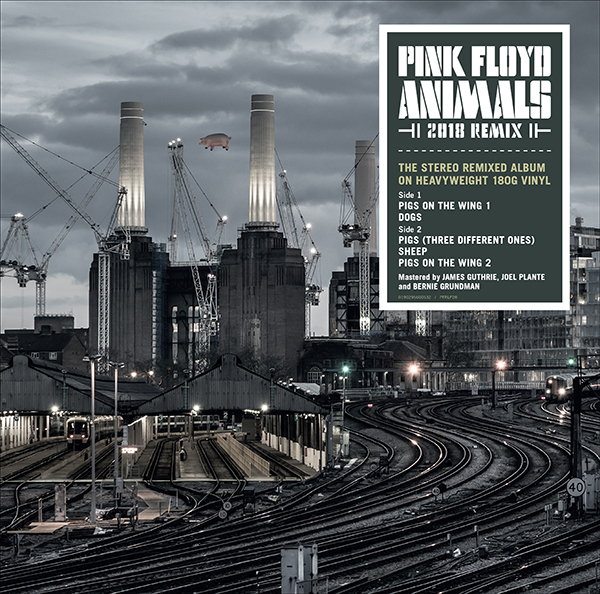
PINK FLOYD
ANIMALS 2018 REMIX
180g LP (Pink Floyd Records/Sony Music)
Side A
1. Pigs on the Wing (Part One)
2. Dogs
Side B
1. Pigs (Three Different Ones)
2. Sheep
3. Pigs on the Wing (Part Two)




